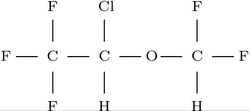PURPOSE: Fluid resuscitation and antibiotic administration are critical components of the early treatment of sepsis. We evaluated the impact of three different early resuscitation regimens on cardiac performance in a murine model of sepsis.
METHODS: 3 groups of 8 C57B1/6 mice were made septic by cecal ligation and double perforation (CLP); 5 controls had sham ligation. After CLP animals received 1 of 3 fluid regimens: 35mL/kg normal saline bolus SQ after surgery only (None), 35mL/kg after surgery and then every 6hr, (Partial) and 100mL/kg after surgery and then every 6hr (Full). All 3 groups received ceftriaxone, 30mg/kg and clindamycin 25mg/kg at 6 and 12hr. Animals were anesthetized briefly with isoflurane for echocardiography using a high-resolution ultrasound system (30Mhz scan-head). Stroke volume (SV, [micro]L) was assessed by Doppler in the aortic outflow tract and fractional shortening (FS, %) by M-mode in the short axis view. Cardiac output (CO, mL/min) was calculated as SV*HR.
RESULTS: From 3 to 9hr after CLP, CO was reduced from 25 [+ or -] 2 to 13 [+ or -] 2 (None), 24 [+ or -] 4 to 15 [+ or -] 5 (Partial) and 26 [+ or -] 5 to 17 [+ or -] 4mL/min (Full), largely due to a reduction in SV, from 56 [+ or -] 6 to 23 [+ or -] 2 (None), 51 [+ or -] 6 to 28 [+ or -] 7 (Partial), and 58 [+ or -] 7 to 32 [+ or -] 5 [micro]L; (Full) (p<0.05 vs baseline and sham operated animals in all groups. Heart rate did not change significantly. Animals that received aggressive resuscitation (Full) reached a normodynamic state at 15hours, CO 23 [+ or -] 7; SV 48 [+ or -] 9; HR 475 [+ or -] 74, p = NS vs baseline and sham operated animals. Unresuscitated and underresuscitated animals remained in a hypodynamic state, CO 14 [+ or -] 6; SV 30 [+ or -] 10; HR 470 [+ or -] 50 (None) and CO 15 [+ or -] 3; SV 40 [+ or -] 9; 395 [+ or -] 35 (Partial), p<0.05 vs baseline, sham operated and aggressively resuscitated animals (Full).
CONCLUSION: Adequate fluid resuscitation is mandatory to restore a normodynamic state in sepsis. In this murine model, which replicates clinical sepsis, early underresuscitation can lead to a sustained hypodynamic state. Early and aggressive resuscitation is necessary to reestablish normal hemodynamics.
CLINICAL IMPLICATIONS: Even seemingly minor degrees of underresuscitation early could potentially impair hemodynamics in later phases of sepsis in patients.
DISCLOSURE: Massimiliano Guglielmi, University grant monies.
Massimiliano Guglielmi MD * Sergio Zanotti MD Walker Tracy MD Magali Zanotti BA Felicitas Ross BA Joseph E. Parrillo MD Steven M. Hollenberg MD Cooper University hospital/UMDNJ, Camden, NJ
COPYRIGHT 2005 American College of Chest Physicians
COPYRIGHT 2005 Gale Group



